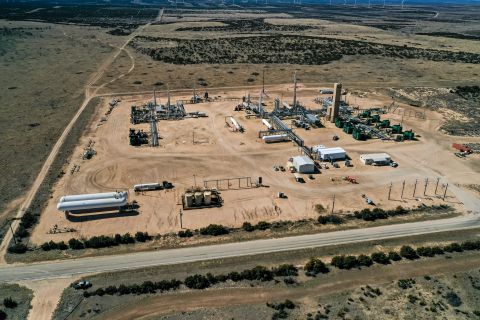The U.S. Minerals Management Service (MMS) tallies 12 discoveries announced by the industry in the ultra-deepwater Lower Tertiary trend in the Gulf of Mexico.
The finds, which have sparked widespread interest in the emerging play, have been made at subsea depths ranging from 15,000 to 30,000 feet. The initial discoveries were drilled in 2001 and 2002 in the Alaminos Canyon and Walker Ridge areas, and the trend has expanded to include the Keathley Canyon area. Lower Tertiary potential could extend across a 300-mile-wide area and encompass 3,000 offshore blocks.
The play made headlines recently as Chevron Corp. and Devon Energy Corp. reported their Jack #2 well results, which suggest the play consists of billions of barrels of oil.
Lower Tertiary reservoirs are a welcomed addition to Gulf of Mexico reserves. Almost all proved reserves in the province have been found in Miocene and younger beds. The MMS notes that, prior to the discovery of the Lower Tertiary trend, just 1% of proved reserves were in reservoirs of that age or older.
The Chevron and Devon announcement of the successful Jack #2 well test in Walker Ridge, combined with BP's new Kaskida discovery in Keathley Canyon, spurred heavy bidding for federal leases in the Western Gulf in August. At the sale, 82 tracts received bids in the Keathley Canyon area. The high bid was $21 million by BP for Keathley Canyon Block 58. In addition, Petrobras bid $12.8 million for Block 59 and Shell bid $6 million for Block 56.
Recommended Reading
Midstream M&A Adjusts After E&Ps’ Rampant Permian Consolidation
2024-10-18 - Scott Brown, CEO of the Midland Basin’s Canes Midstream, said he believes the Permian Basin still has plenty of runway for growth and development.
Post Oak-backed Quantent Closes Haynesville Deal in North Louisiana
2024-09-09 - Quantent Energy Partners’ initial Haynesville Shale acquisition comes as Post Oak Energy Capital closes an equity commitment for the E&P.
EQT to Cut Workforce 15% Following Close of Equitrans Acquisition
2024-10-02 - EQT Corp. closed its $5.5 billion all-stock buy of Equitrans Midstream Corp. on Sept. 22.
Diamondback to Sell $2.2B in Shares Held by Endeavor Stockholders
2024-09-20 - Diamondback Energy, which closed its $26 billion merger with Endeavor Energy Resources on Sept. 13, said the gross proceeds from the share’s sale will be approximately $2.2 billion.
Comments
Add new comment
This conversation is moderated according to Hart Energy community rules. Please read the rules before joining the discussion. If you’re experiencing any technical problems, please contact our customer care team.




